Level Air Designed by Art Brilhart Metal Tenor Sax Mouthpiece
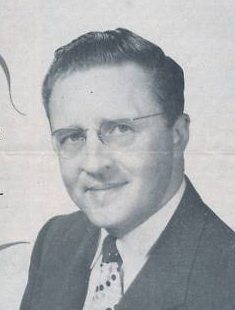
Too making mouthpieces, Arnold Ross Brilhart also recorded about 30,000 records. His first recording was waxed in November 1921 with Yerkes' S. South. Flotilla Orchestra. He also recorded with The Dorsey Brothers Orchestra, Joe Venuti, Irving Mills, and Hoagy Carmichael.
Brilhart used a dissimilar tip opening numbering system than those of Meyer or Otto Link. His standard sizes were consistent to his numbering system, withal many of the very small and large sizes varied from piece to piece. So it is best to measure the tip openings. Brilhart had 5 master models:
- Tonalin : The ivory colored model with the black bite plate.
- Ebolin: The blackness colored model with the white bite plate.
- Tonalite : The clear plastic model.
- Hard Rubber : These were generally large bedroom mouthpiece made from a very good quality hard safety.
- Personaline: These were their top of the line mouthpiece. They had a Personaline model identical in interior shape to all the in a higher place mouthpieces. These all had a unique 'Vita-Curve facing on them.
A special thanks to Otto Andresen ( Saxmundstykker ) and to Chadd Berry ( World Broad Sax ) for their input on this page.
BRILHART TIMELINE
- 1904 – Arnold R Brilhart was born in Connecticut on September 30, 1904
- 1939 – Designed by Arnold Brilhart mouthpieces released in August of 1939. Visitor based at 435 Middle Neck Road, Corking Neck New York. The phone number was: Great Cervix 4054
- 1940 – Tonalin and Ebolin mouthpieces release on August fourteen, 1940
- 1942 – On January 20, 1942 the Brilhart Trademark with mouthpiece on left and the reed on the correct was released.
- 1946 – In December of 1946 Company address inverse to Box 31, Mineola, New York
- 1951 – Personaline model released. Visitor address changed to East Neck Road, Huntington, New York.
- 1954 – In May of 1954 the Brilhart Company moved to Carlsbad, California
- 1954 – Brilhart files an application for his trademark in United kingdom. Shortly afterward, he starts making mouthpieces there.
- 1965 – Brilhart patented "Fibercane," the first composite reed material.
- 1966 – Selmer buys Brilhart Company and the rights to the Brilhart name. In the contract Arnold Brilhart is is not allowed to make woodwind mouthpieces for ten years.
- 1977 – ARB (Stands for Arnold Ross Brilhart) trademark offset used. ARB saxophone and clarinet mouthpieces made with Beechler (Remle Musical Products Inc).
- 1980 – On Jan 15th, 1980 the Arbex trademark first used.
- 1980'south – Graftonite and Metalite mouthpieces released.
- 1988 – Arnold Brilhart passes away in California on May 21, 1998.
1939 – DESIGNED BY ARNOLD BRILHART – Version 1:
These were the very first mouthpieces made by Arnold Brilhart fabricated from August 1939 until Baronial 1940. They were marked "Designed by Arnold Brilhart" on the back. They were made in Great Cervix, New York and only came in hard safe for clarinet, alto and tenor. These had quite large chambers, like to the Otto Link mouthpieces of the same era. They all had three or 4 digit numbers with a unproblematic font, and Neat Cervix, NY written on the shank:

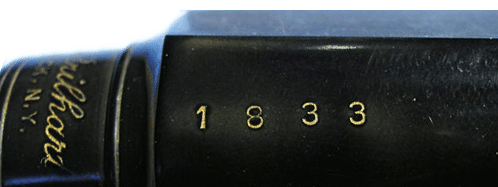
1940 – DESIGNED BY ARNOLD BRILHART – Version 2:
The second version of the "Designed by Arnold Brilhart" mouthpiece was made from August 1940 until Jan of 1942, and were besides made in Neat Neck, New York. The Tonalin, Ebolin and Tonalite models were made, also as the hard rubber. They all had the tip openings marked on the table.

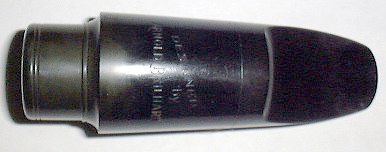
The series number font inverse to a large 'Old Fashioned' font, and Great Neck, NY was stamped on the shank. The STREAMLINE version had a narrower trunk:
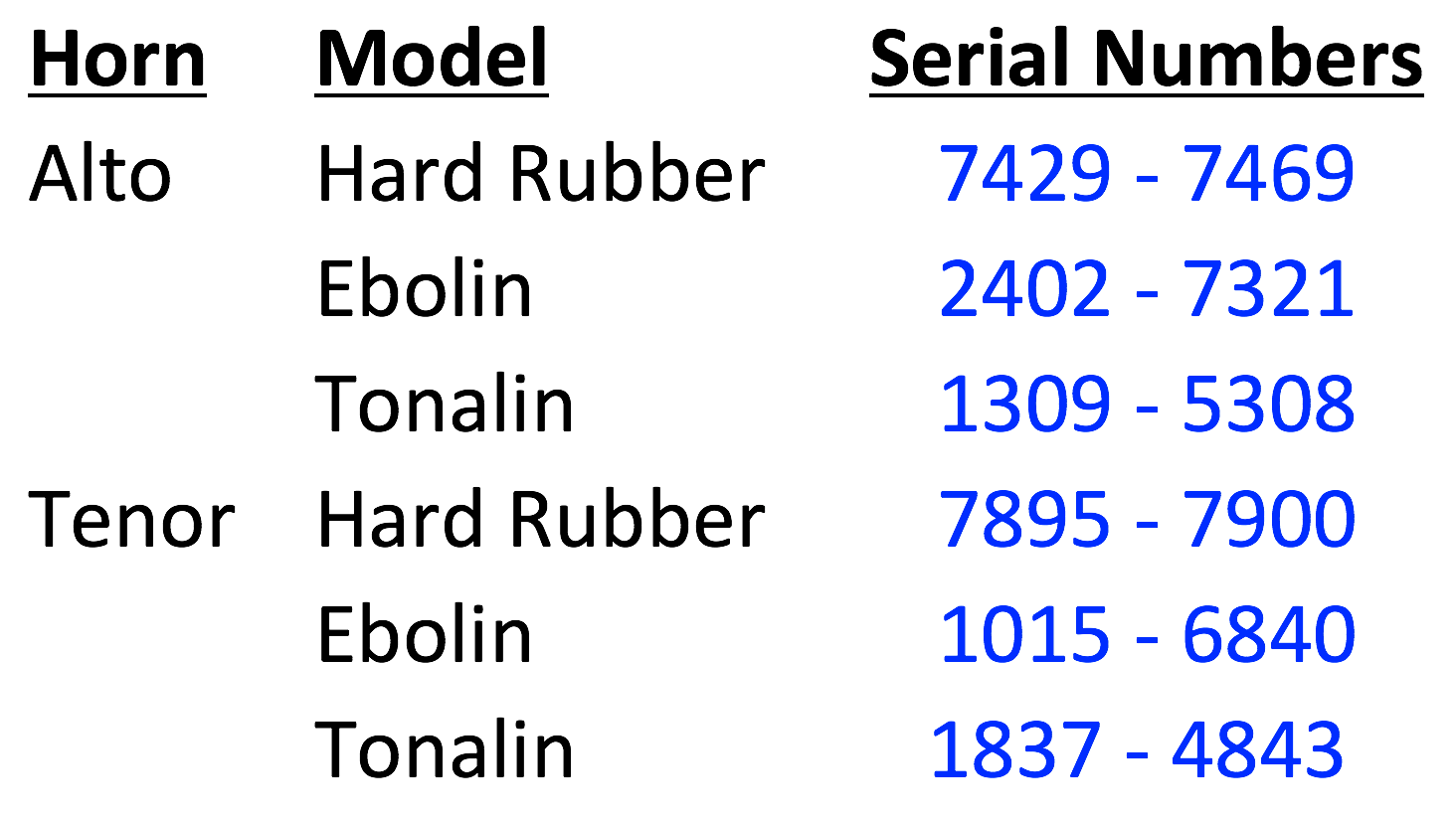
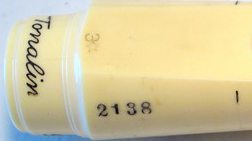
Streamline mouthpieces were made during about of Brilhart'due south career, from 1939 on, in Designed past Arnold Brilhart, Tonalin and Ebolin models. The body and chamber of these mouthpieces is a bit thinner and narrower than their counterparts. Hence, they too take a bit narrower and more focused sound likewise.

1942 – GREAT NECK, NEW YORK:
In 1942 Brilhart started to utilise their new logo with the mouthpiece on the left, and the reed on the right. I did my best to restore this logo from 1943 letterhead. Shown below, we have the Tonalin (white mouthpiece with black bite-plate) and Ebolin (black mouthpiece with white bite-plate). Fifty-fifty though these had flat side walls, they likewise had a unique sleeping room with the within ground out bigger than the subsequently models. This made these particularly adept playing. The outset ones had the tip opening marked on the table. Later, they stamped them on the dorsum.

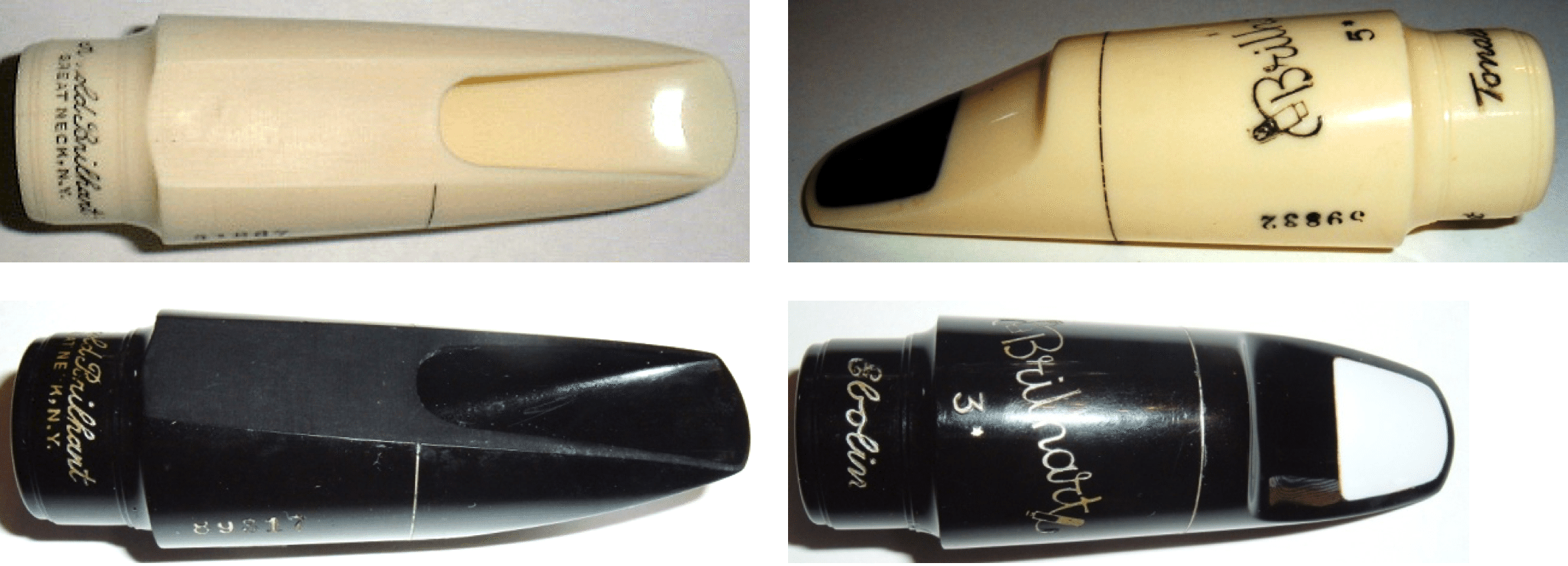
These still had a big five digit 'Old Fashioned' font with Great Neck, NY was stamped on the shank.
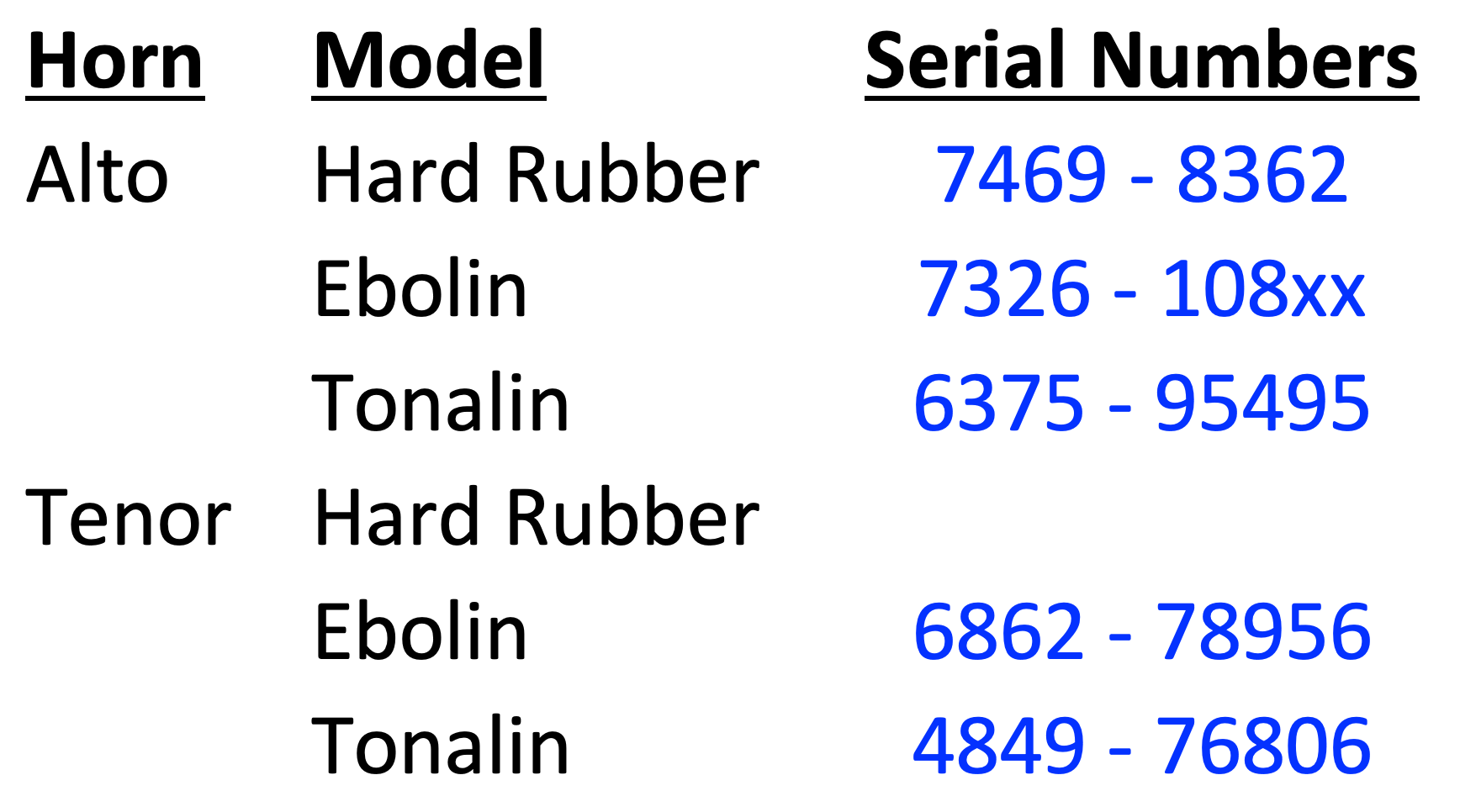
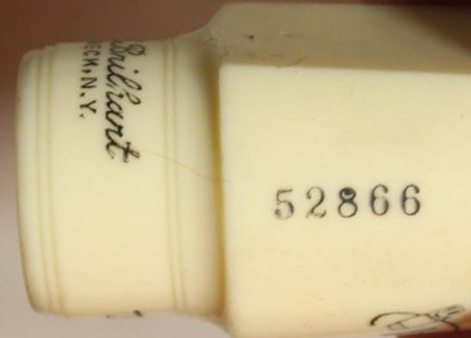
Lester Young played on an Ebolin for a time:
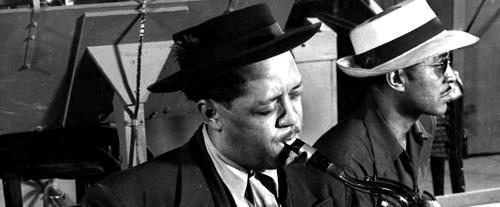
1946 – MINEOLA, NY MOUTHPIECES
In December of 1946 Brilhart changed their address to Box 31, Mineola, New York. The 'Great Neck, NY' was removed from the shank, still, it still had the Large 'One-time Fashioned' font and ligature line around the trunk.
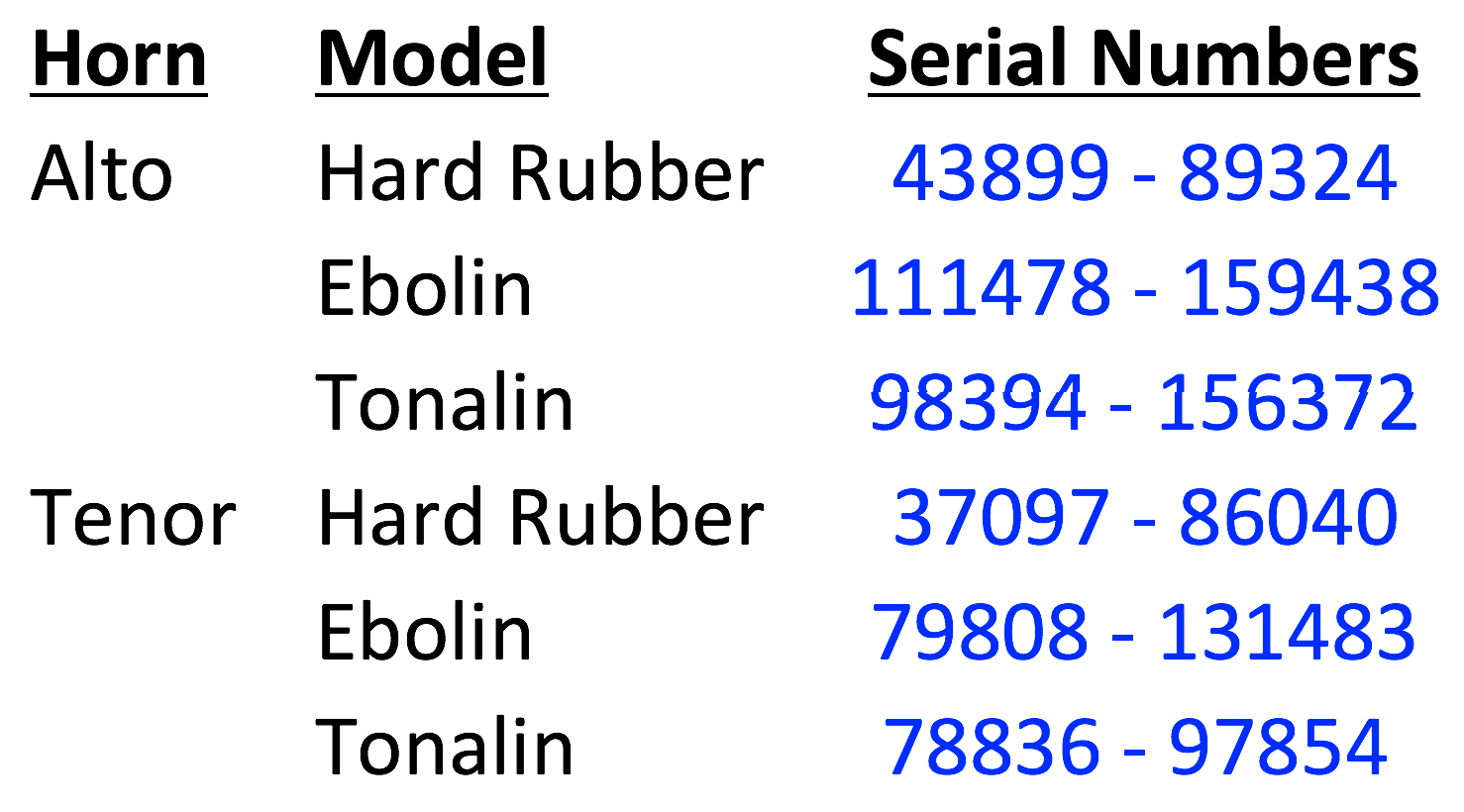
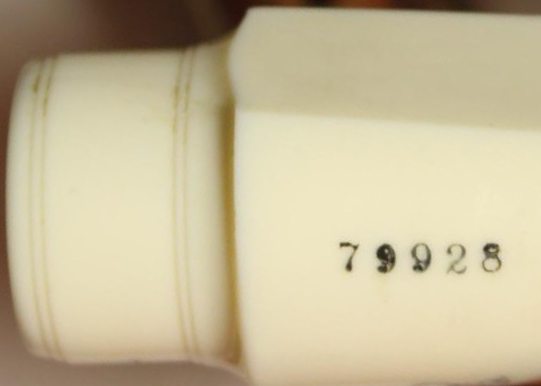
1951 – PERSONALINE MOUTHPIECES & Motility TO HUNTINGTON, NY
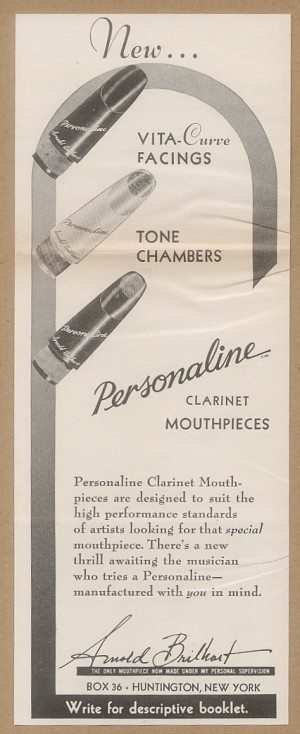
The Personaline model was released in 1951, the same year the company moved to E Neck Road, Huntington, New York. Arnold R. Brilhart called the Personaline model, "The only mouthpiece at present made under my personal supervision." This explains the proper name.
The Personaline model had a more aerodynamic shaped body with the same chamber every bit the Ebolin and Tonalin. These models had a wood-grain look round bite-plate.

A hard safety version of the Personaline was also made. This came in ii models. One had a big round bedroom with rounded inner-side walls (like the Brilhart mouthpiece stamped "Difficult Rubber" on the shank). These difficult rubber mouthpieces are amongst the best mouthpieces always made. The second version had a medium to large sleeping room with only slightly rounded inner-side walls and the floor was a bit lower. This mouthpiece tended to be a bit darker and centered than its larger chambered brother.
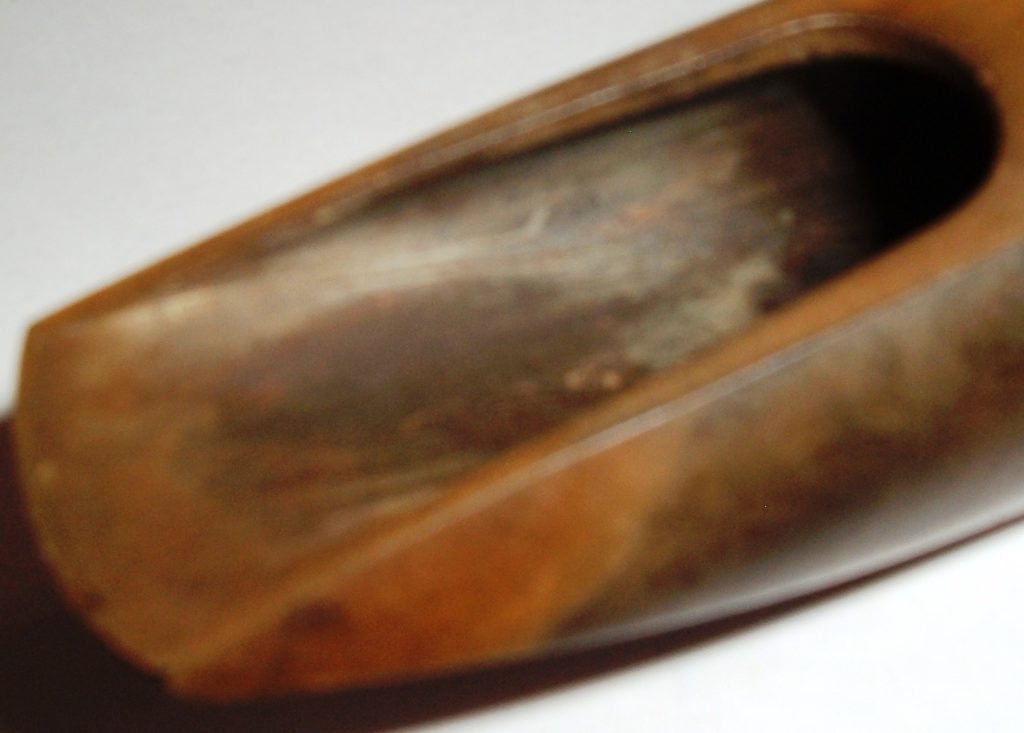
ROUNDED SIDE WALL one
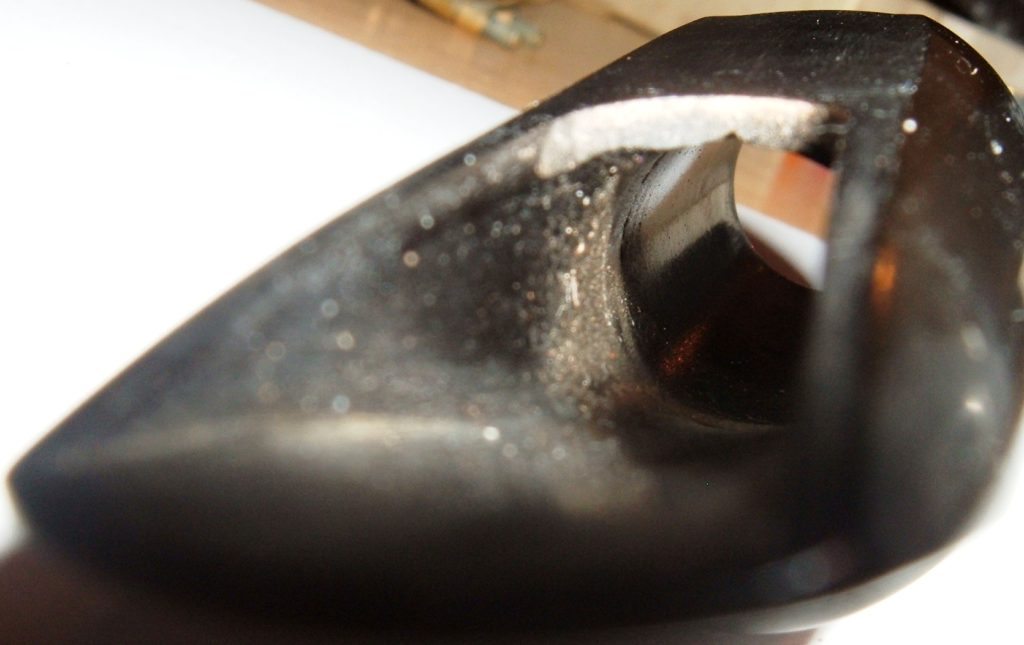
ROUNDED SIDE WALL 2
1951 as well marks the start of the 'small font' serial numbers, and no more ligature line on the mouthpiece. Brilhart restarted the serial numbers at this time as well, so even though you may see four digit serial numbers it the mouthpiece doesn't take 'Great Neck, NY' on the shank, it is from this Huntington period.

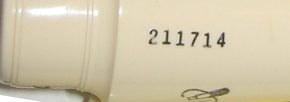
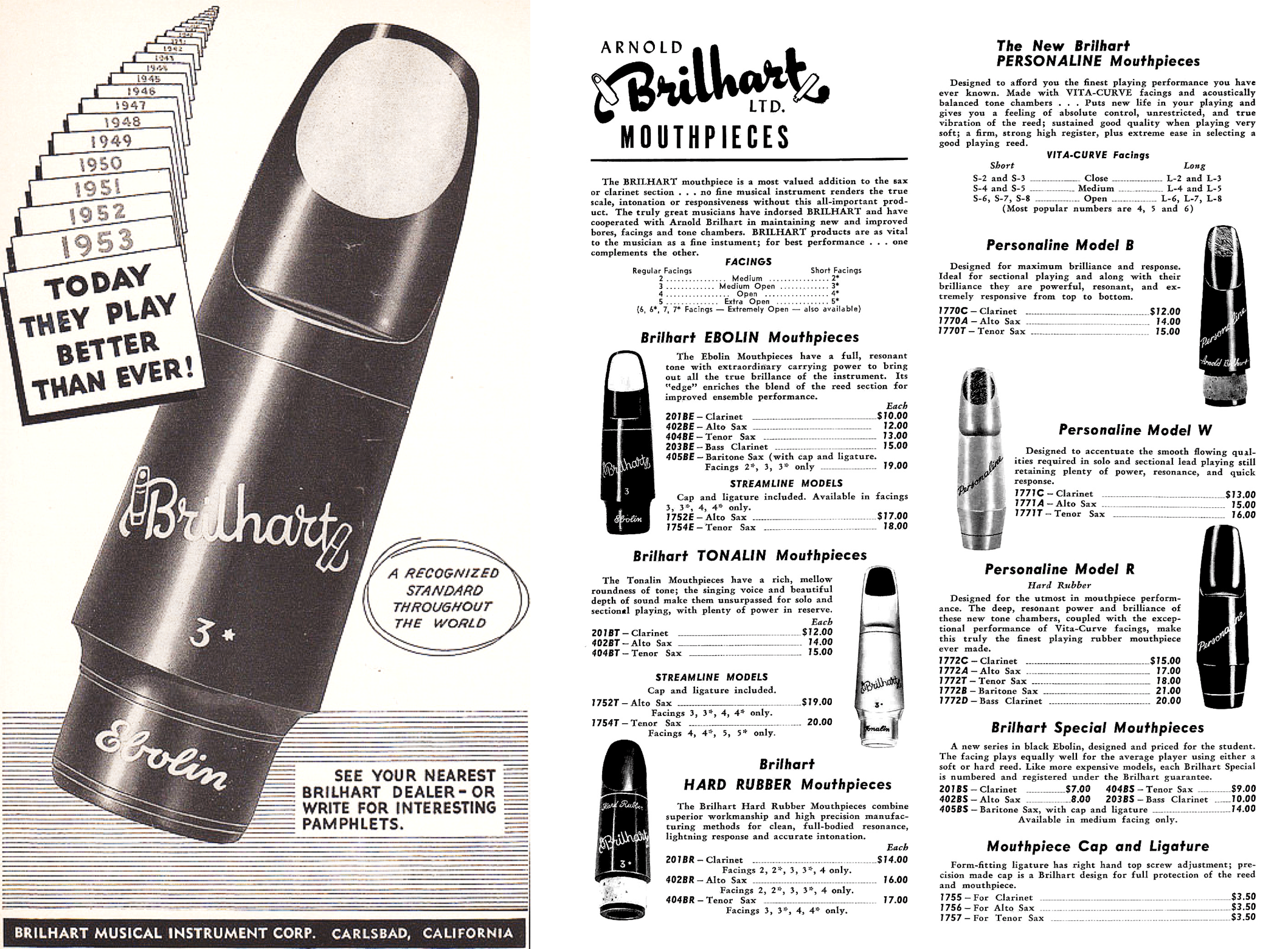
1954 – CARLSBAD, CALIFORNIA:
From May of 1954 until November of 1966 the Brilhart mouthpieces were made in Carlsbad, California.Ebolin, Tonalin and Tonalite models looked the same every bit the Corking Neck models. However, they did not have the Dandy Neck, NY address on the shank and the serial number font was still the smaller Arial style font. Internally, they remained very similar, merely the overall book of the chamber was smaller equally they did not have the enlarged bedroom of the Great Cervix models.

Here is an example of the series numbers of a Great Neck mouthpiece (which has a larger font) and a afterward Carlsbad mouthpiece, with the smaller 'Arial Type Font'. The Carlsbad mouthpieces also had no ligature placement line on the mouthpiece:
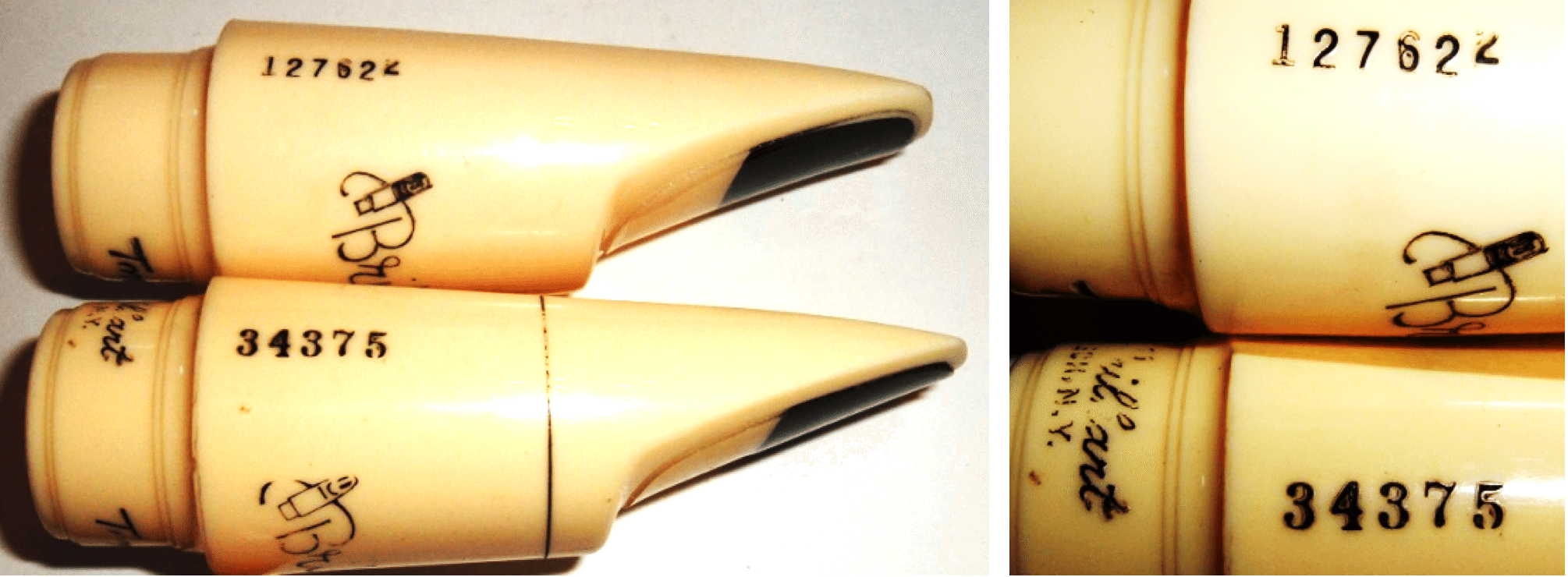
The classic hard rubber Brilhart model was stamped "Hard Safety" on the shank. These used an amazing hard rubber chemical compound that when ground to grit smells very sweet. These had a relatively high flooring for the menstruum, giving them great projection. They had a very short facing curve though, and then tend to play amend when a longer facing is added. These had a large round bedchamber with rounded inner-side walls very much like the Otto Links. The floor was a flake more rounded though. These are arguably every bit good or better players than the 'Slant Signature' Otto Links.

Zoot Sims played on the 'Hard Rubber' Brilhart Tenor Mouthpiece:
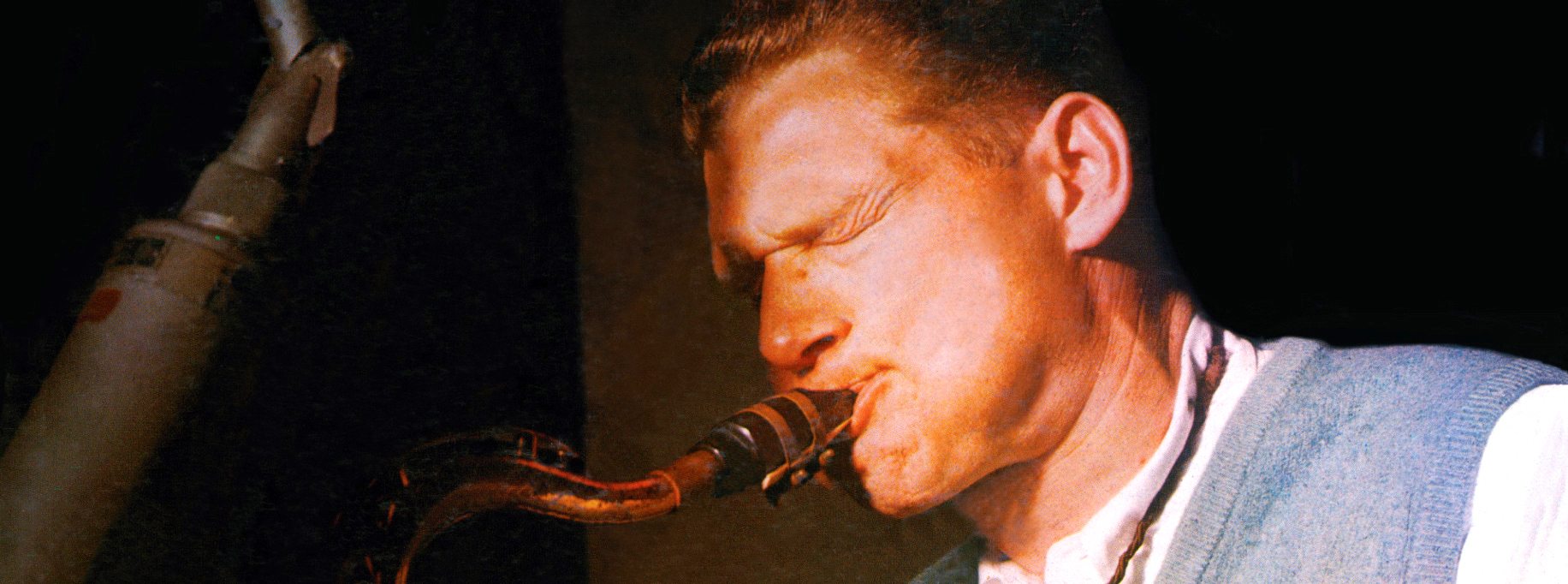

Mouthpiece insert from the Carlsbad period of mouthpieces:
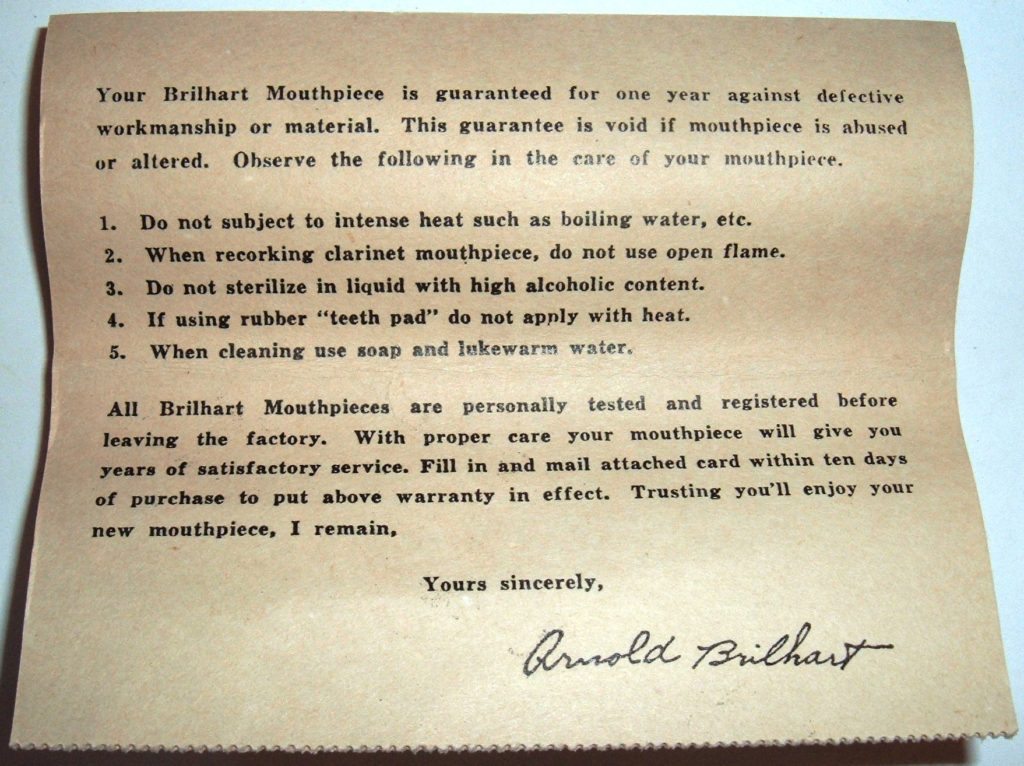
Charlie Parker played on this mouthpiece:
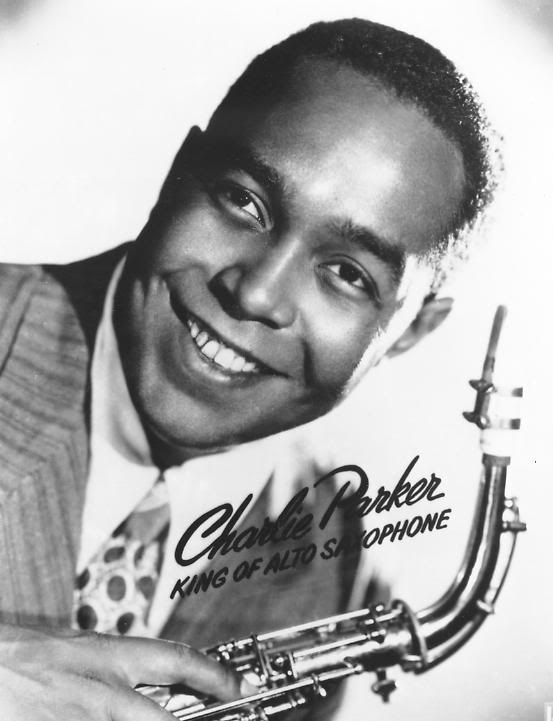
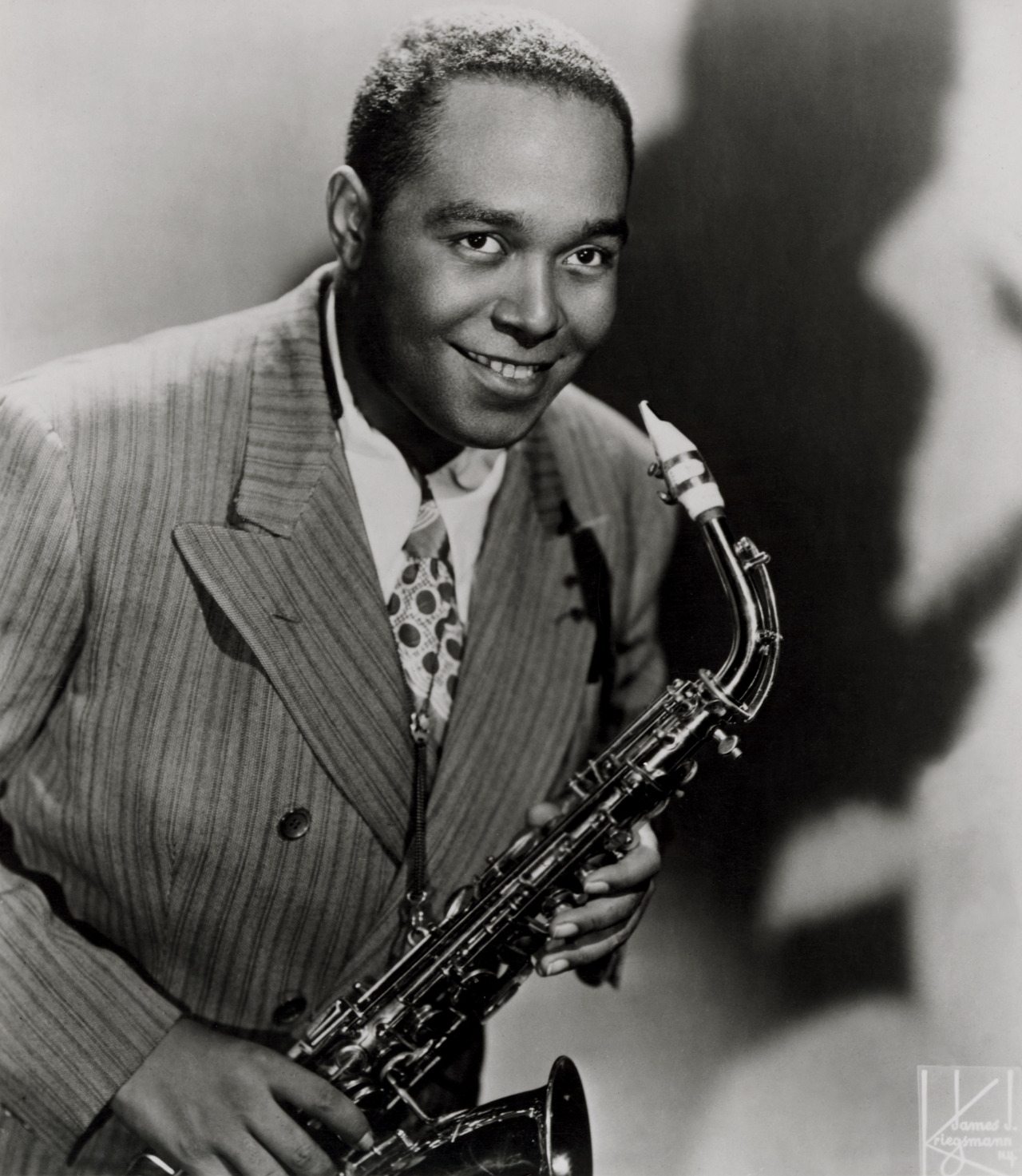
Cistron Ammons also played this mouthpiece on tenor:
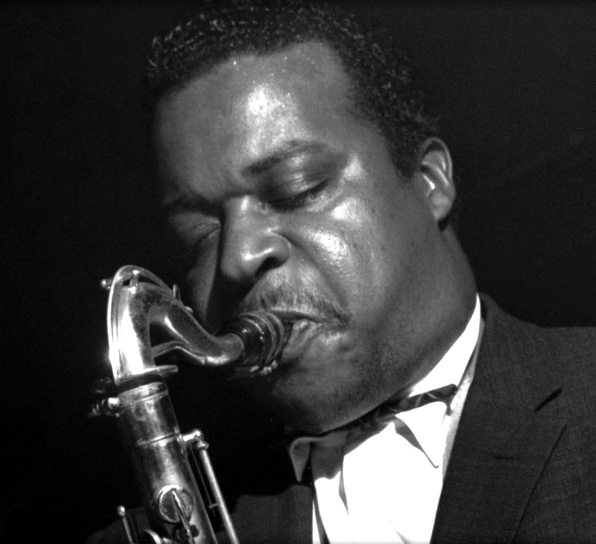
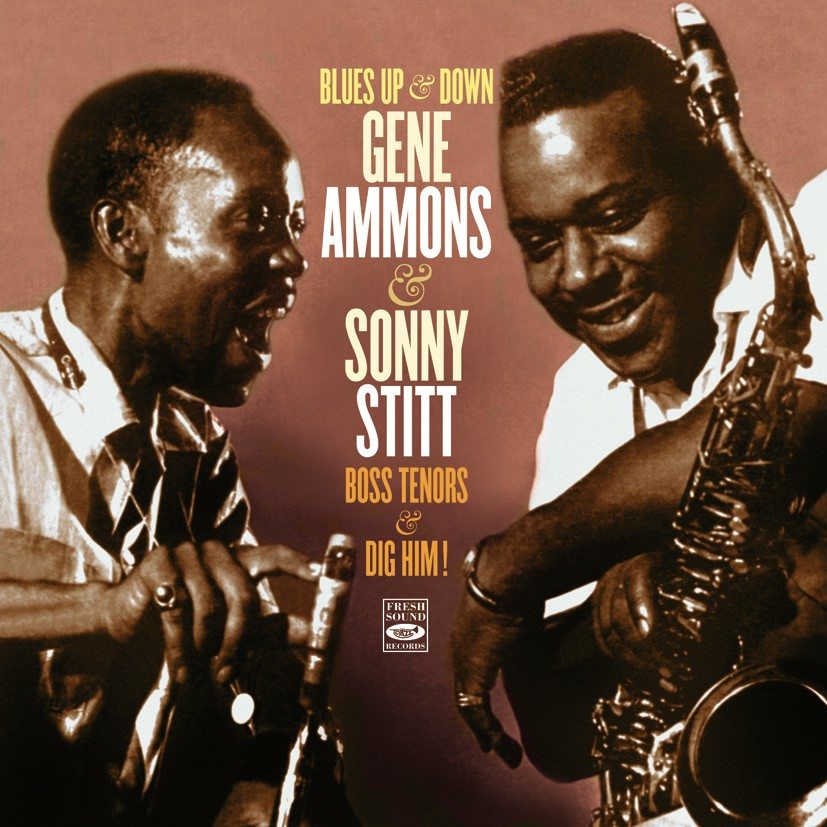
BRILHART LIGATURES:
The offset Brilhart ligatures are rare and highly desired ligatures. These 'plate' ligatures, had a plate that came in contact with the reed, and where made in two designs. One had a plastic 'plate' and the second had a metallic 'plate'. The plastic plate version had three banded body with tan plastic reed-plate and black epoxy ended pollex screws. These were probably fabricated between 1940 to 1953.
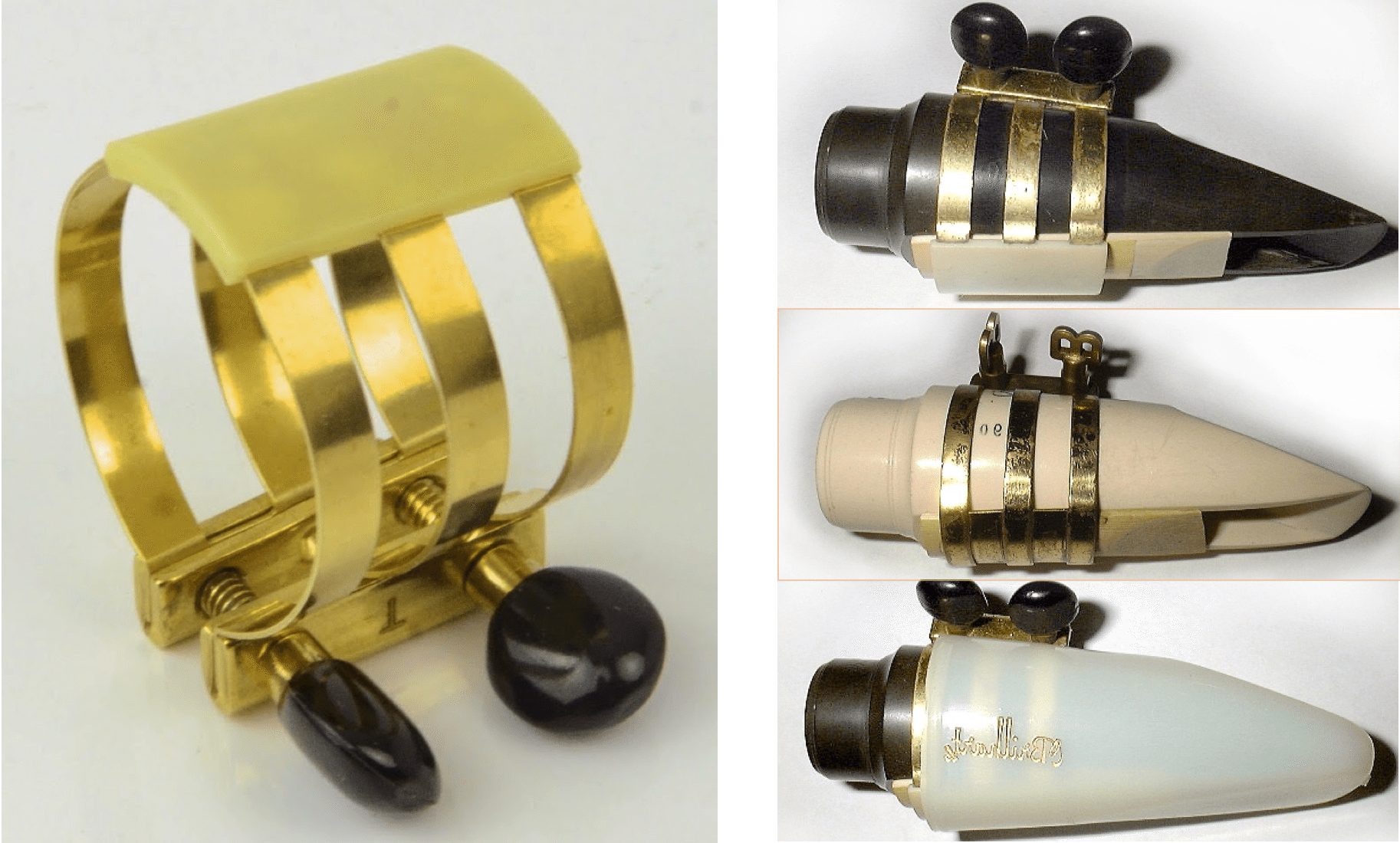
Kenny Garrett made this ligature very popular. He played on the plastic 'plate' version shown above.
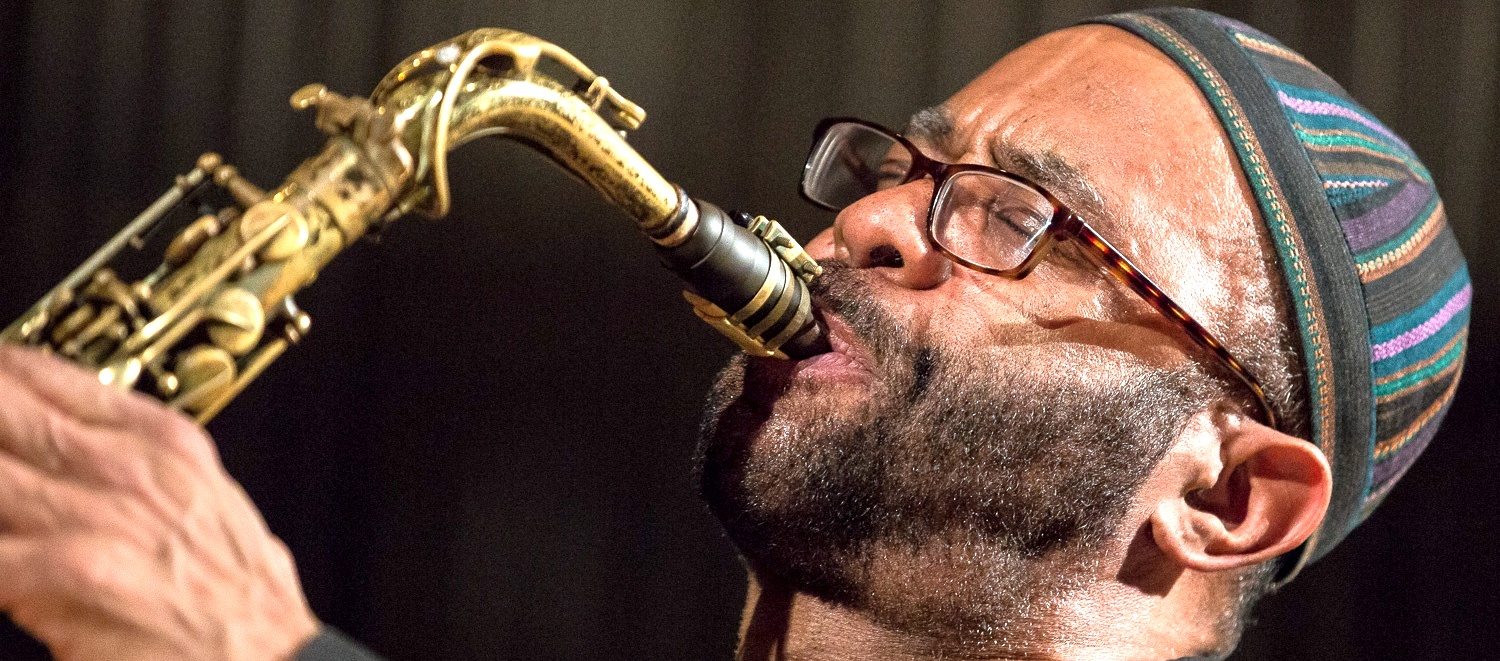
The metal plate version sometimes came with an A and B on the screws, but that is rare. More ofttimes it came with the BB on the spiral. All of these had thick contumely screw posts that the thumbscrews went through and screw into. Along with the plastic plate version, these are the about valuable Brilhart ligatures, and were also probably made between 1940 to 1953.:
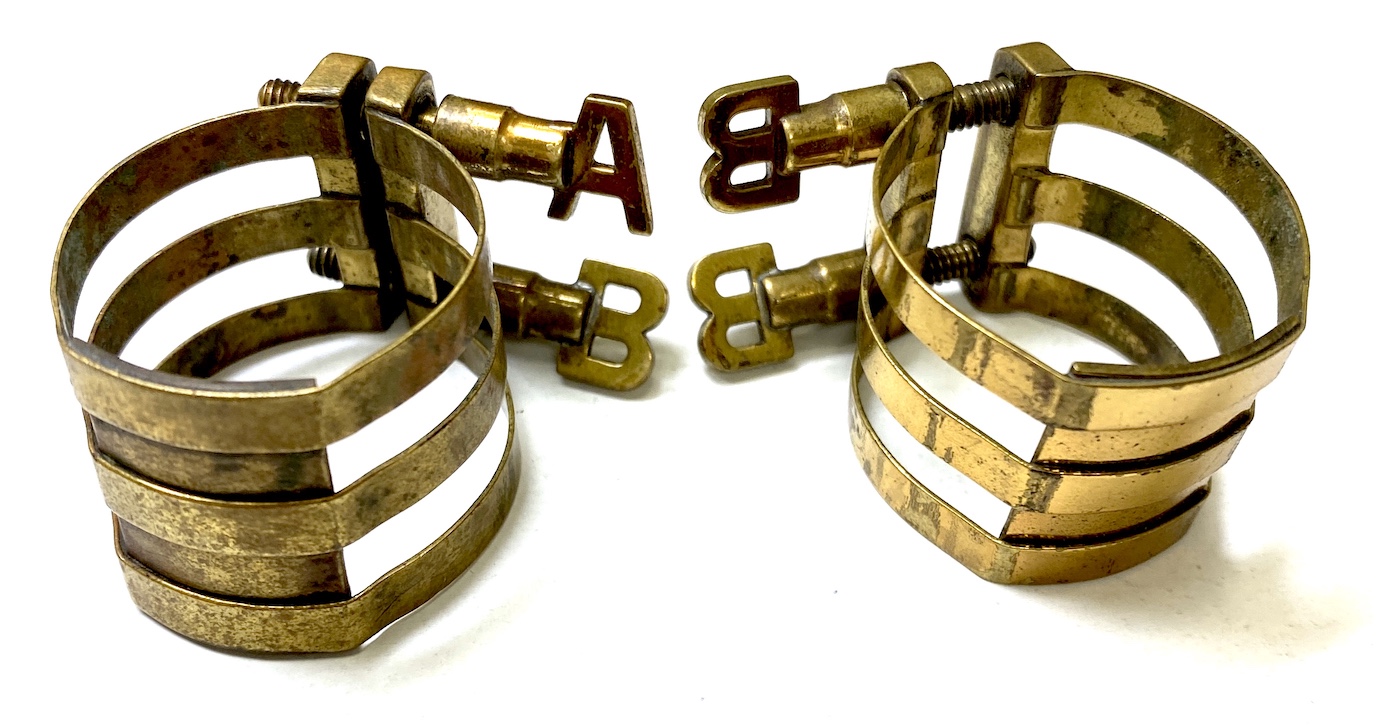
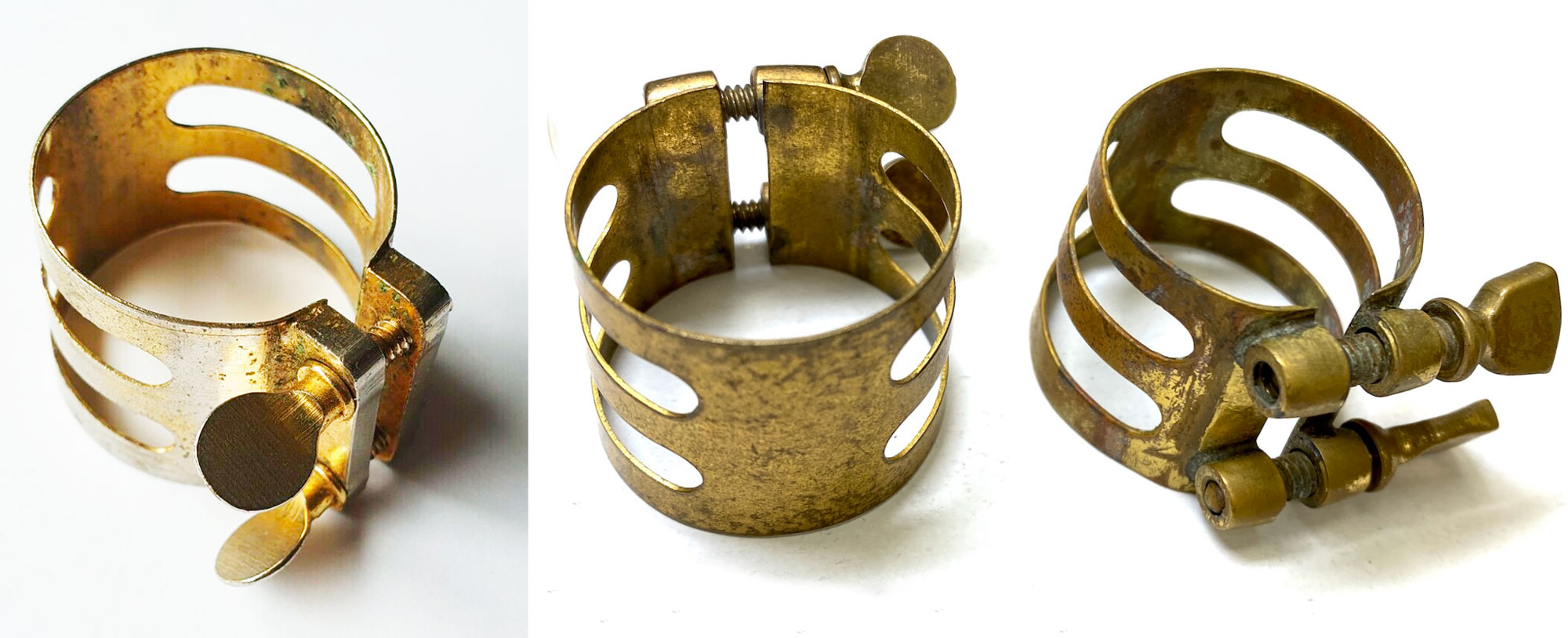
The next ligature version was similar to the plate model, made from heavy estimate brass, just it had no plate. (ligature on the left) These probably started existence made in 1954. At some betoken after 1954, this aforementioned ligature dropped the thick ligature spiral posts. (ligatures in eye and right) These were fabricated until 1965
Meanwhile, at the England factory, starting in 1954, a unique single spiral down ligature with pressure plate was made. The pressure plate is very thick, giving a dark muted sound, much similar a Master Link single spiral ligature.

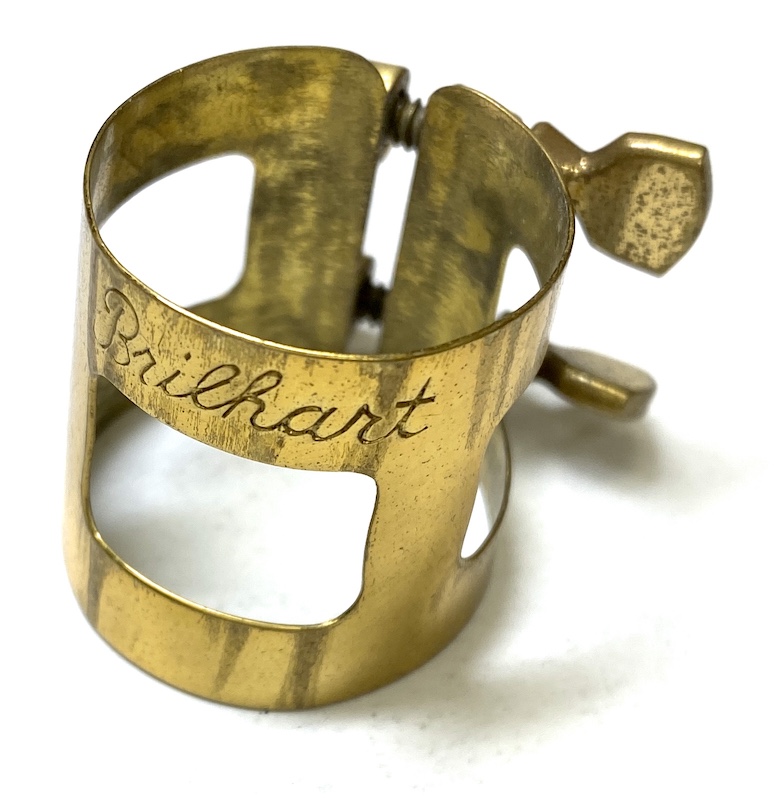
The last Brilhart ligature made, was fabricated from a thin estimate of contumely, which was much more common with most ligatures of that fourth dimension. It had the Brilhart name engraved, and is a good sounding ligature. These seem to have been made subsequently 1966, when Selmer bought company.
BRILHART BOXES:
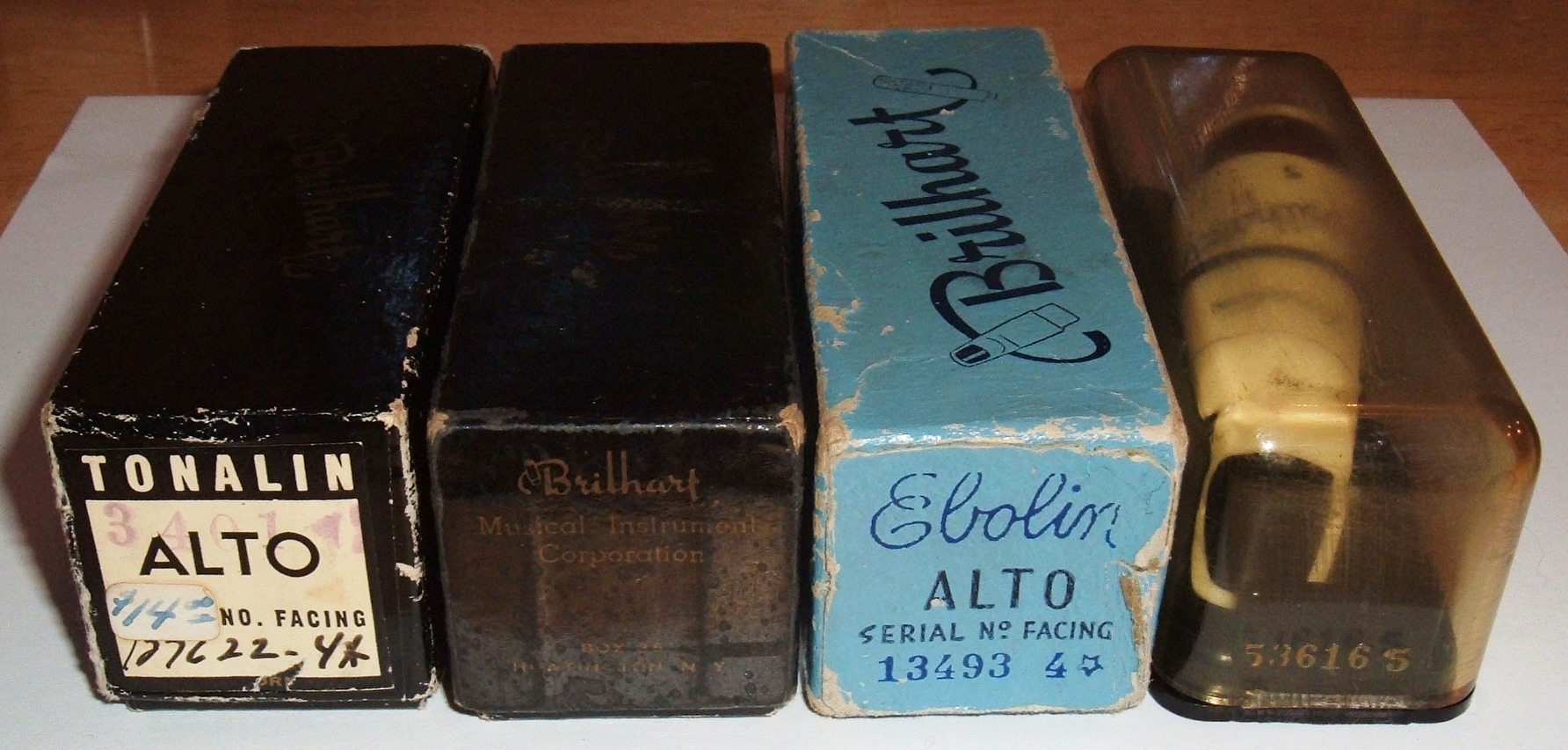
1954 – BRILHART – Made IN ENGLAND:
From 1954 to 1966 Brilhart Carlsbad mouthpieces were also being manufactured in England at the same fourth dimension by ROC. There were far fewer of these fabricated. Most of them were Tonalin and Personaline models. These mouthpieces were longer, came standard with a band on the shank and 'fabricated in England' stamped on the side. The band was a VERY skillful idea as peachy shanks were always a problem for them. It would accept been nice if they did that on their American models every bit well.
The proper name ROC came nearly when the two company founders, Norman Taylor and Harry Risk, were sitting in their part trying to think of a short name for their range of new mouthpieces when a large van passed the window. On the side of this van was the company logo "Rubery Owen Company" hence the name ROC. It wasn't long before they remembered that ROC was the name of a mythical bird…hence the logo was built-in. ROC manufactured the mouthpieces from scratch and also made mouthpiece for at to the lowest degree 6 other companies. Hope that this info is of interest to y'all. ROC Instrument Co. stopped the manufacture of mouthpieces many years ago and moved into the manufacturing of part piece of furniture. Subsequently the company name changed to ROC Part Furniture. ROC was eventually sold in 2006.

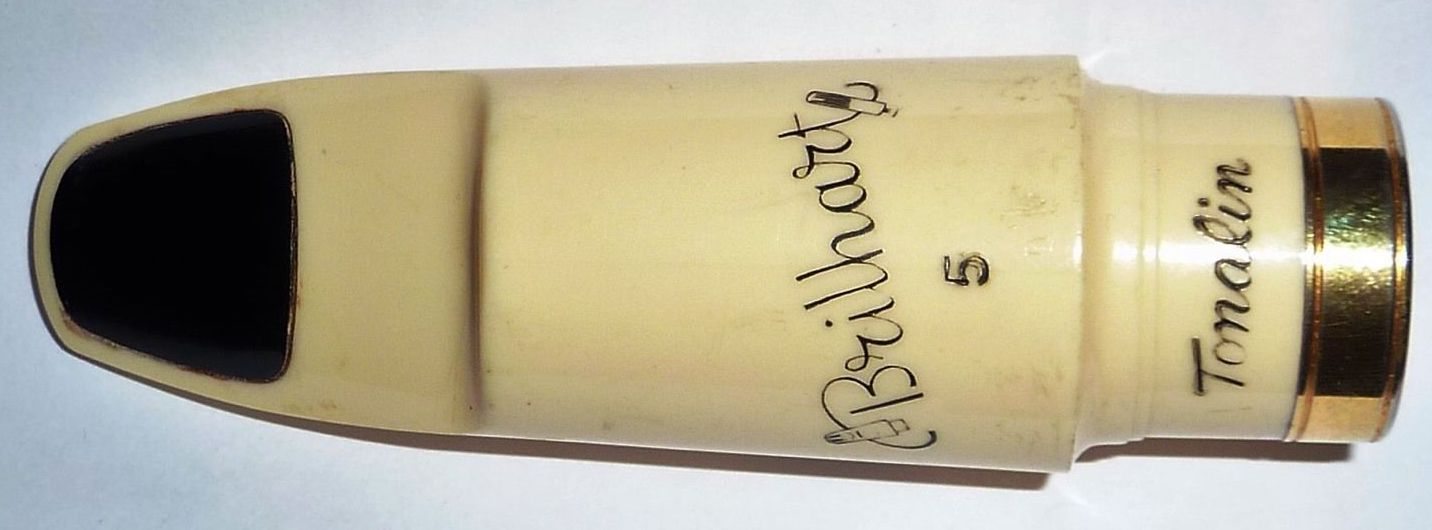
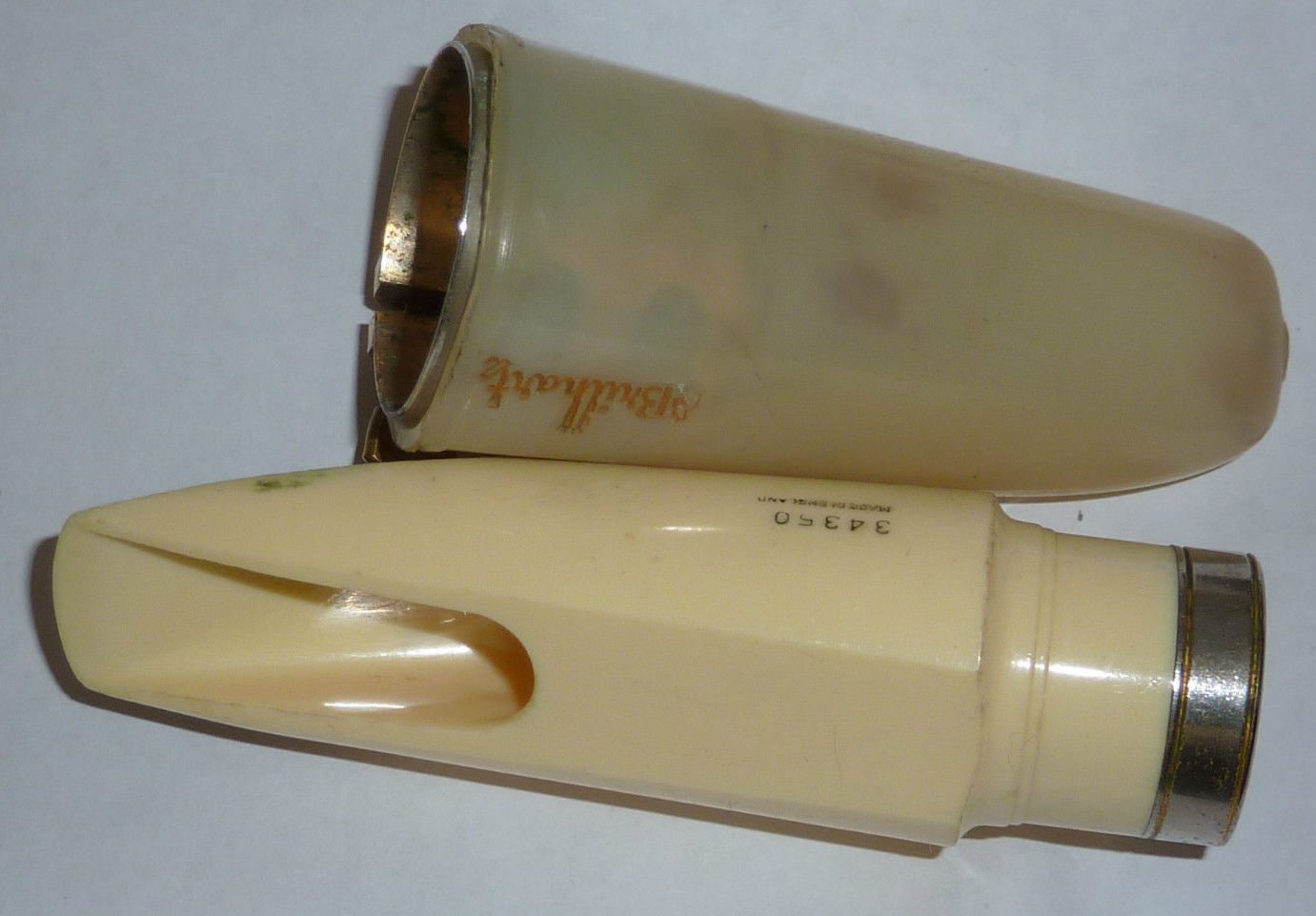
Here you can see how the Made in England mouthpieces by ROC were longer:
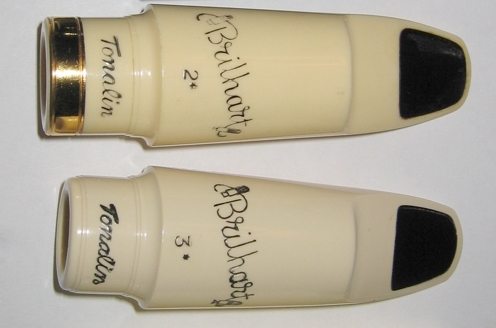
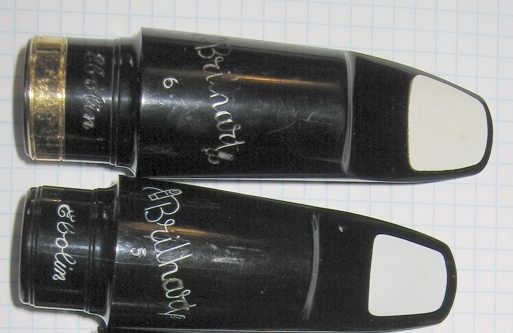
VELVET BRASS:
The rarest of all Brilhart mouthpieces is the Velvet Brass model. These were mostly a epitome mouthpiece. However, a few finished production models were made. They had the standard oval, medium-bedchamber design with flat side walls and were very heavy due to the big amount of brass used to make them.


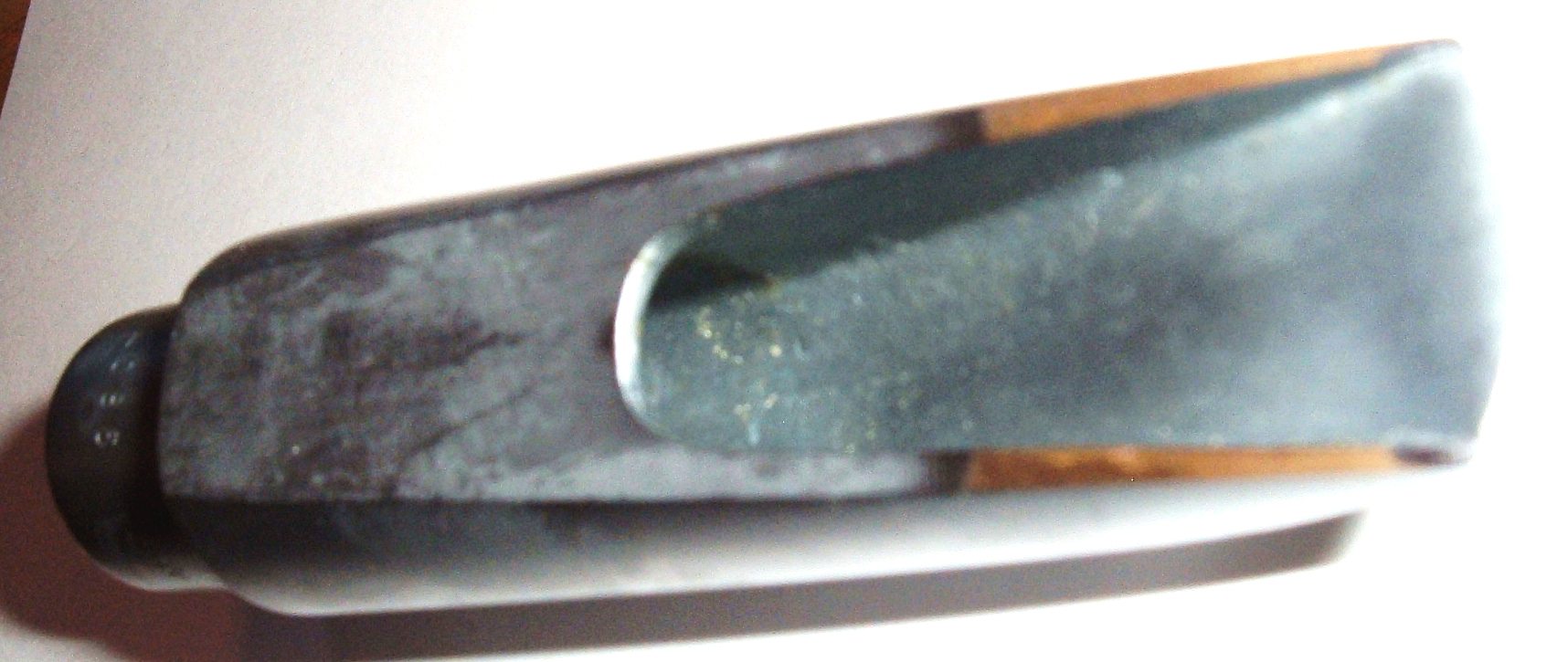
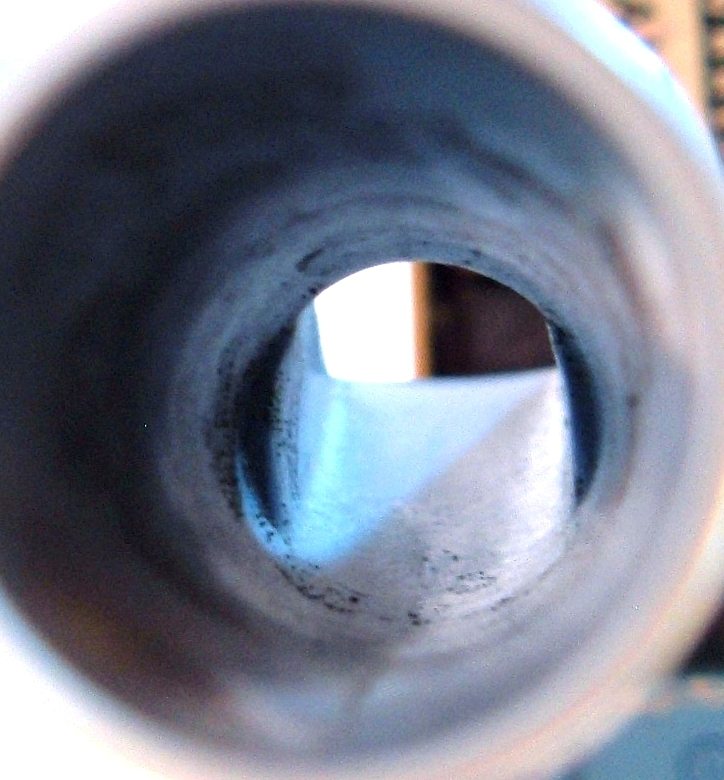
1966 – SELMER BUYS RIGHTS TO BRILHART
In November of 1966, Selmer buys the Brilhart Visitor and the rights to the Brilhart proper name. In the contract Arnold Brilhart is is not immune to make woodwind mouthpieces for 10 years. They brand mouthpieces with series numbers until July 1967. After that, only the Level-Air model has series numbers.
These mouthpieces however had the minor Arial style font, but the ligature placement line got added dorsum on. A unique quality of this era is that the serial number actual gives the appointment of industry. The series number below shows it being made on February ix, 1967.

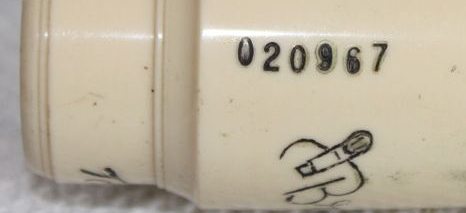
1966 – BRILHART LEVEL-AIR:
These mouthpieces were made in the 60s and 70s and were relatively very brilliant. They were made from stainless steel and for the late models the serial number actually reads the industry engagement. A serial number of 122474 would hateful it was made on December 24, 1974. This is just a rule of thumb, though, and only applicable for the after vintage models.
A model of the Level Air is currently existence fabricated, though it is completely different from the vintage ones. Below is the vintage model, which can be divided into two versions. The get-go version made had heavy machine marks going from side to side on the table. The later vintage models, that otherwise looked the aforementioned, had length-wise machine marks on the tabular array. The beginning version played ameliorate than the later version.



1977 – ARB
ARB, which stands for Arnold Ross Brilhart, started making mouthpieces again since it was so 10 years after he sold the Brilhart name to Selmer. Part of his contract when selling the Brilhart company to Selmer was to no longer make mouthpieces for ten year.
At this time he started making saxophone and clarinet mouthpieces made with his skillful friend Elmer Beechler. Elmer Beechler was a mouthpiece refacer for Arnold Brilhart in the 1940'southward, and formed his ain company in 1950. His company (Remle Musical Products) all the same makes mouthpieces today, and is currently ran past his daughter Judy Beechler.
1980 ARBEX MOUTHPIECE
In 1980 ARB released the ARBEX mouthpiece:
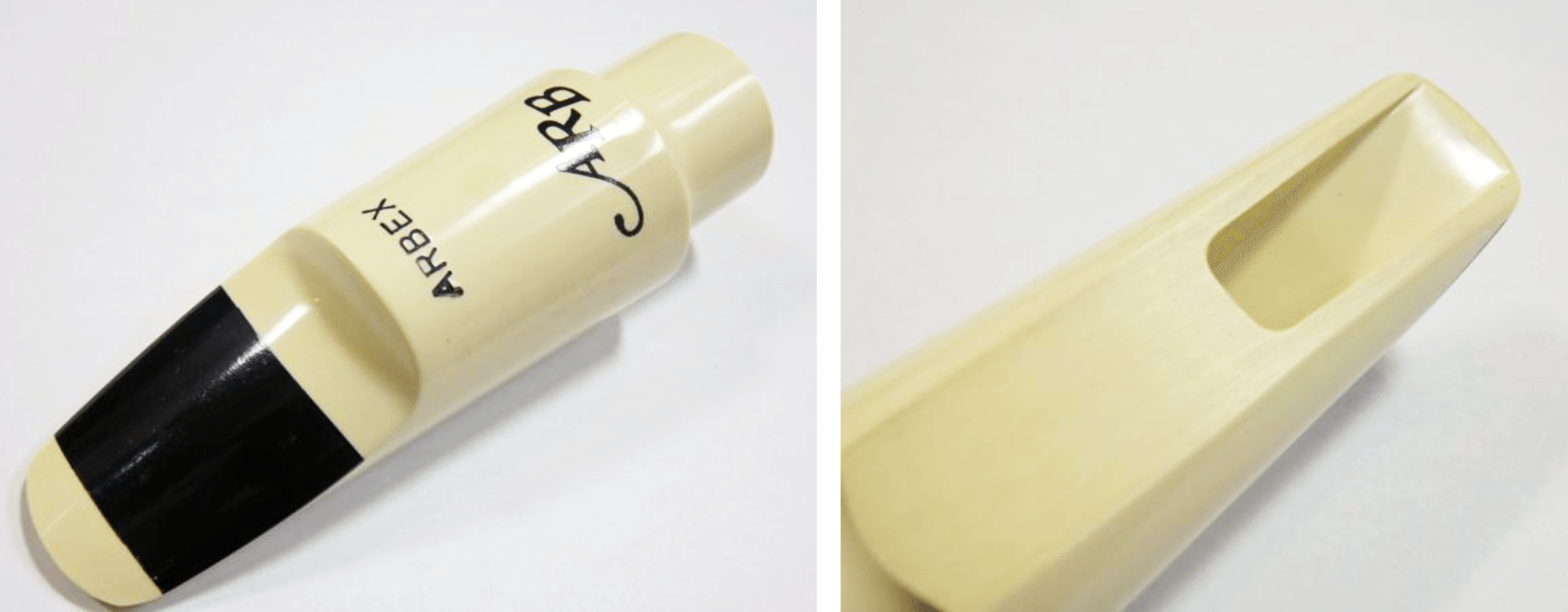
The ARBEX mouthpiece came in both black and ivory. The material was the aforementioned nonetheless, the pigment used in the black (to make it blackness) was harder, so the mouthpiece had a brighter sound. The pigment used in the ivory model (to make it ivory in colour), fabricated it softer. Brilhart described the ivory as having a more 'singing' sound.
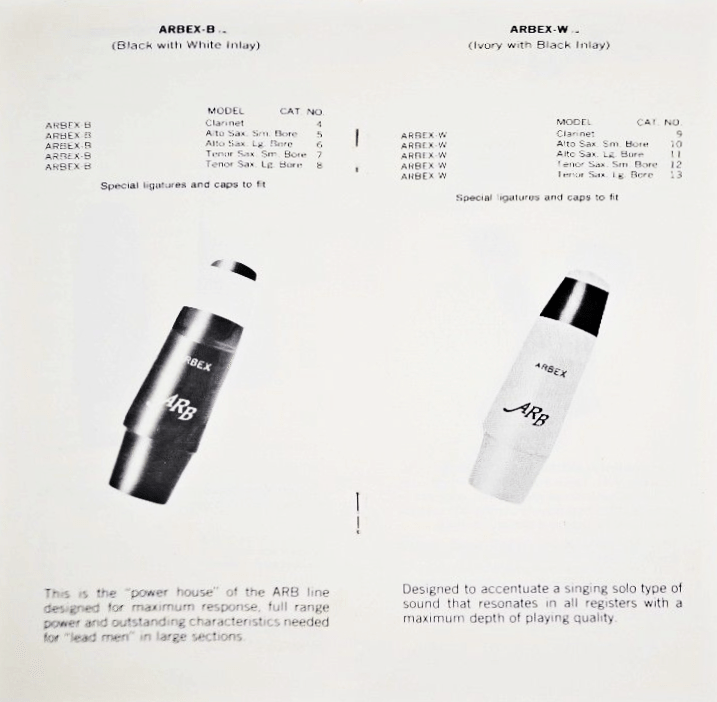
ARB GREAT Cervix ORIGINAL
Remle Musical Products, which is currently run by the wonderful Judy Beechler, currently sells this model.
Remle had vintage blanks left over, so released them as ARB Dandy Cervix ORIGINAL models. These had plain text on the back, and are vintage Tonalin blanks. As they don't brand the blanks, only put the name on them, once they sell out of these they will no longer sell them anymore. They ran out of the tenors in December of 2004, so now only sell the clarinet and alto mouthpieces.
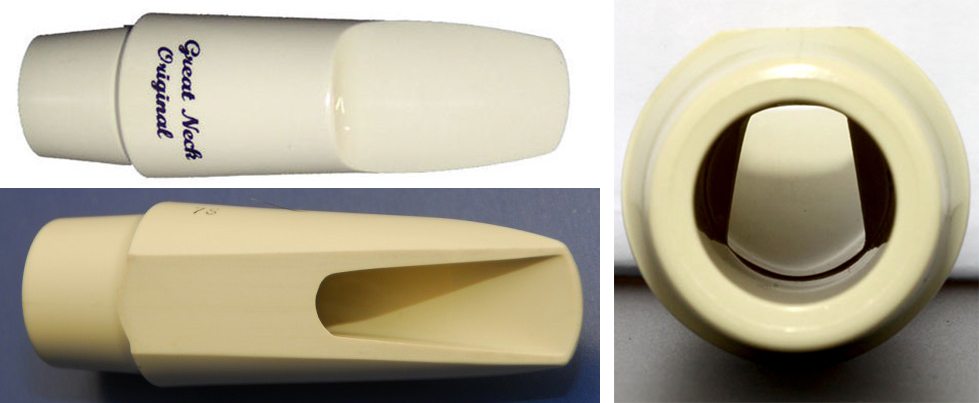
1980s ARB METAL & Hard Prophylactic MOUTHPIECES
These mouthpieces were developed by Elmer Beechler and Arnold Ross Brilhart together. Both these mouthpieces came in soprano sax, which was the first time Brilhart made a soprano sax mouthpiece.
The metallic version is still sold by the Beechler company now. They are machine faced and hand finished. The tip openings and facings numbering are those developed past Arnold Brilhart. These mouthpieces are made from Stainless Steel and have a very high baffle like to the 'Level Air' type pattern.
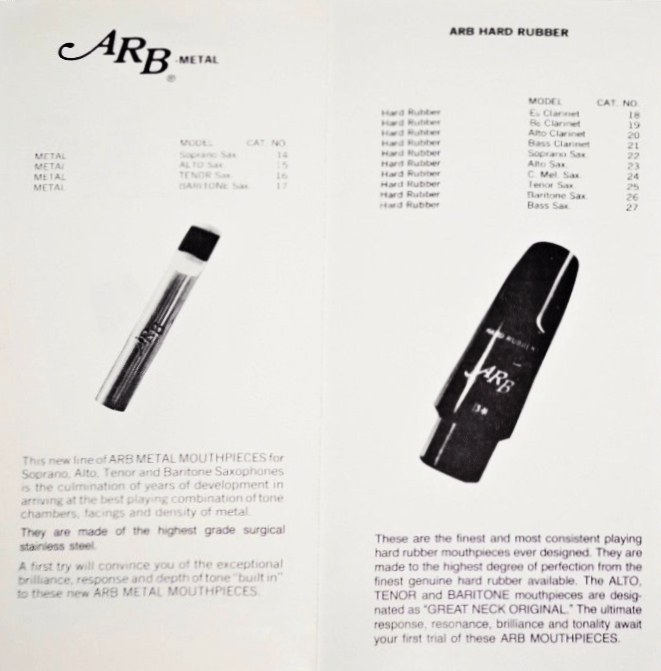

1980s – GRAFTONITE MOUTHPIECE
Arnold Brilhart'due south last mouthpiece designs were the Rico Graftonite and Metalite mouthpieces. Mr. Brilhart was very proud of these mouthpieces. All of these mouthpieces had a rough look finish on the outside.
The Rico Company made the Graftonite mouthpieces for alto and tenor in 3 chambers (A, B, & C). A is the darkest, and was meant for concert playing. The B chamber was versatile, and meant for Band playing. The C bedchamber was brilliant and catered to jazz and rock & curlicue music. The soprano and baritone models but came in the B chamber.

1980s – METALITE MOUTHPIECE
The Metalite model was brighter than even the C bedchamber Graftonite, every bit it was based on the vintage version of the Level-Air design with a high Footstep-Baffle. These had the rough outside like their Graftonite brothers.

Somewhen Rico stopped product of the Metalites, with the last of these having a smooth cease instead of a rough stop. Though in 2009 Rico re-introduced them in soprano, tenor and baritone. In 2010 they released the altos. These had the same smooth finish as the final of the Metalites from before they stopped production prior to 2009.

Source: https://theowanne.com/knowledge/mouthpiece-museum/brilhart-mouthpieces/
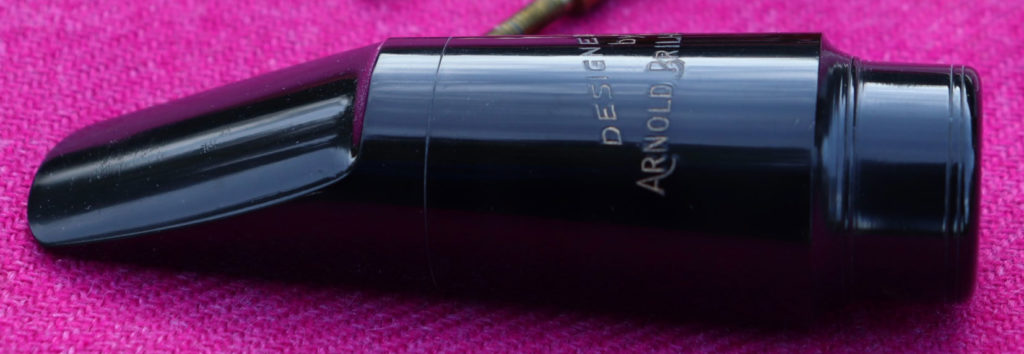
0 Response to "Level Air Designed by Art Brilhart Metal Tenor Sax Mouthpiece"
Postar um comentário